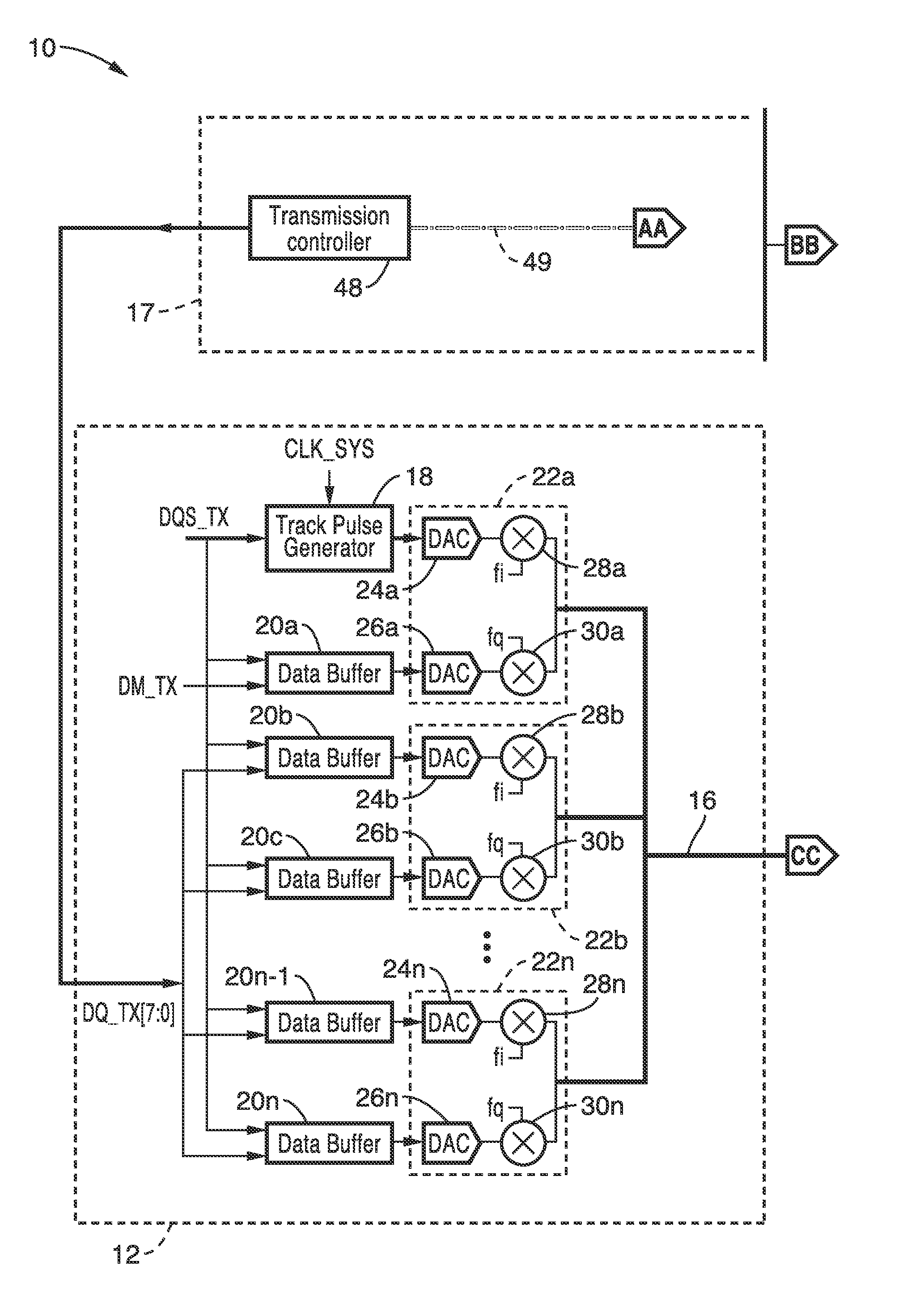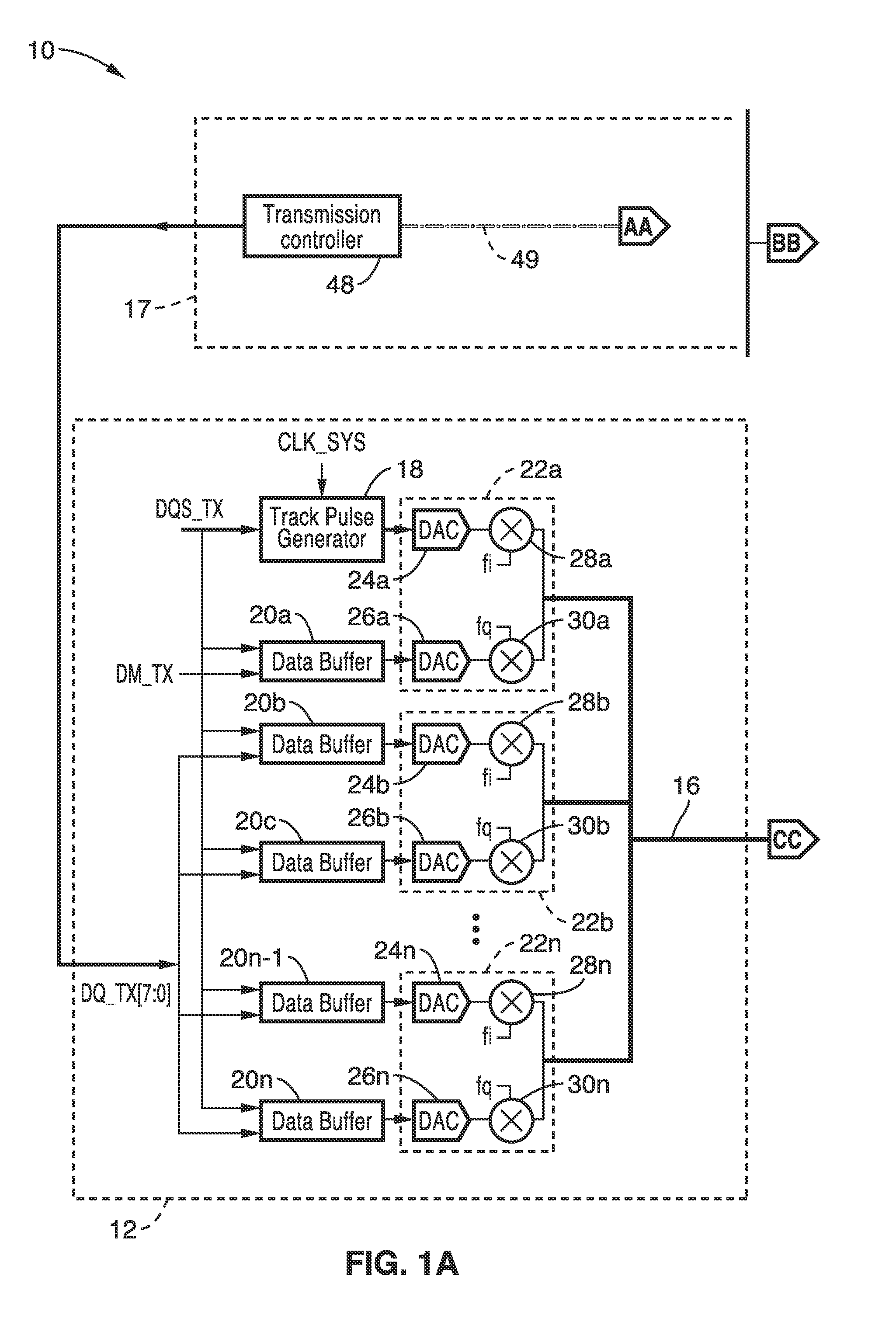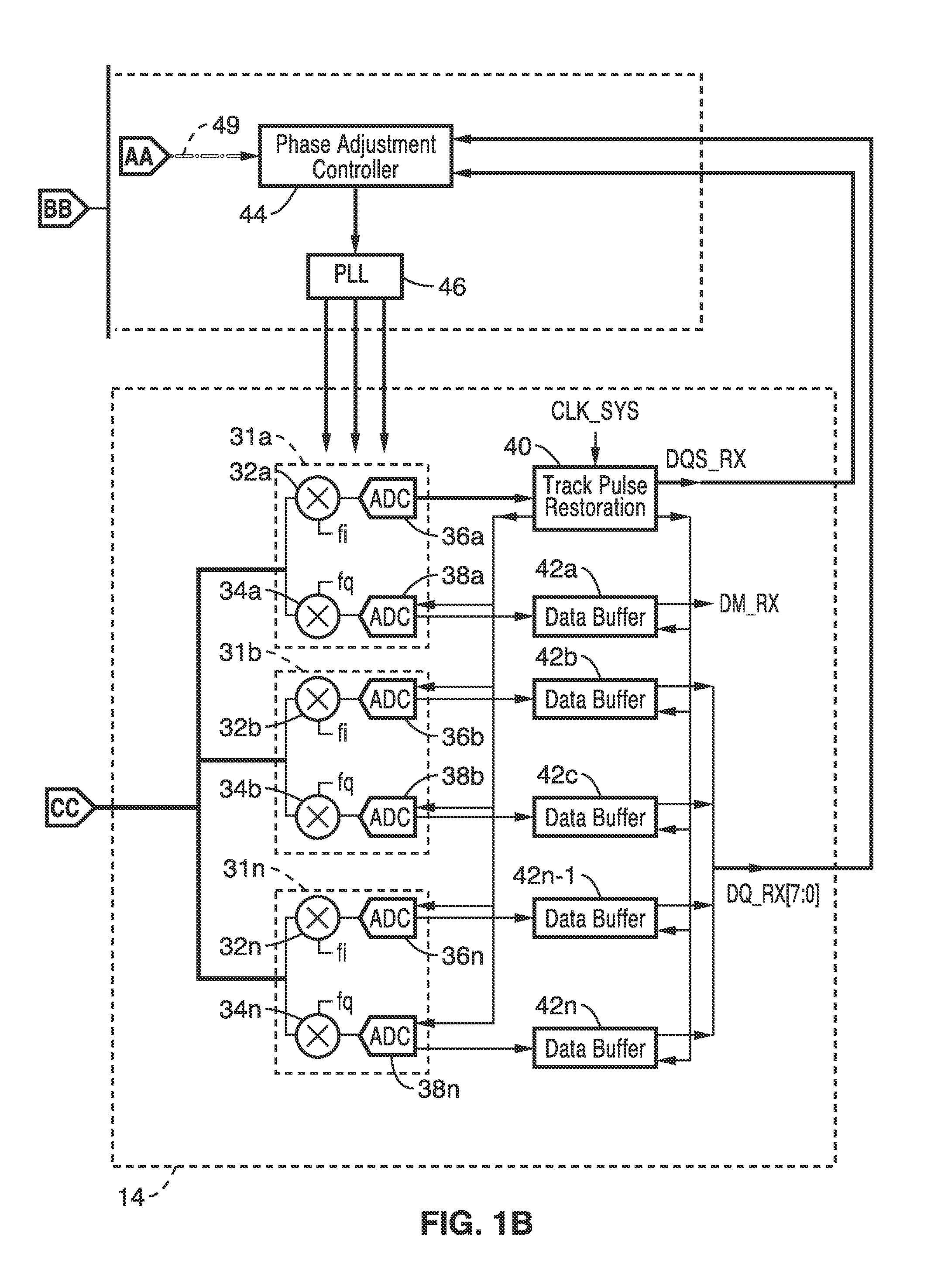Phase synchronization of modulation or demodulation for QAM-based multiband TSV-link
- Summary
- Abstract
- Description
- Claims
- Application Information
AI Technical Summary
Benefits of technology
Problems solved by technology
Method used
Image
Examples
Embodiment Construction
[0019]Synchronization between modulation and demodulation is described for use in short-range chip-to-chip wired RF communication. The inventive apparatus, system and method provides a number of advantages, including lower power, lower latency, higher interference tolerance between neighboring through-Silicon-vias (TSVs).
[0020]Phase synchronization between modulation and demodulation carriers in RF communications is traditionally carried out through the use of digital signal processing. The demodulated signal is down converted to baseband and digitized by analog-to-digital converter. Then a digital signal processor (DSP) is utilized to perform the phase synchronization for the demodulated signal by using a digital-lock-loop (DLL) circuit. This conventional method requires a complicated algorithm implemented in DSP, which increases not only the latency of signal processing but also the power consumption.
[0021]In the presently described technology, a new method is described for perfor...
PUM
 Login to View More
Login to View More Abstract
Description
Claims
Application Information
 Login to View More
Login to View More - R&D
- Intellectual Property
- Life Sciences
- Materials
- Tech Scout
- Unparalleled Data Quality
- Higher Quality Content
- 60% Fewer Hallucinations
Browse by: Latest US Patents, China's latest patents, Technical Efficacy Thesaurus, Application Domain, Technology Topic, Popular Technical Reports.
© 2025 PatSnap. All rights reserved.Legal|Privacy policy|Modern Slavery Act Transparency Statement|Sitemap|About US| Contact US: help@patsnap.com



